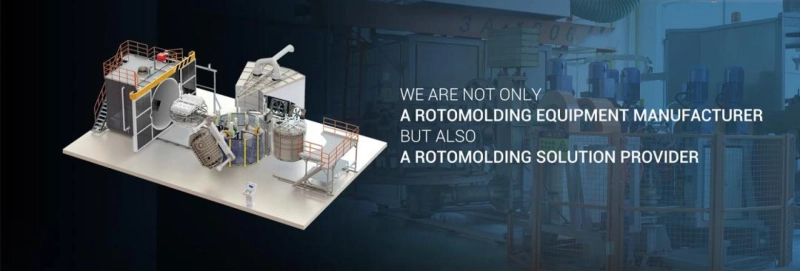Rotomoulding, also known as rotomoulding mould, produces hollow objects with excellent structural integrity. The process is a casting technique, but unlike most plastic processes, it does not use pressure. Because this mould is not pressure resistant, it can be produced in relatively small batches at a reasonable price.
China Rotomolding produces a wide variety of products that can be made using the rotomoulding process. Product designers have exceptional freedom with this process as almost any shape can be produced. There are thousands of applications for moulded parts in almost any size.
The process
- The concept of rotational moulding is simple to understand. A plastic material, usually in powder form, is placed in a hollow mould, usually made of cast aluminum or sheet steel. This mould is rotated on two axes.
- After heating the mould, the polymer gradually melts and adheres to the inside of the mould as the oven rotates. The polymer powder is melted in a mould and then cooled with air, sometimes water mist, once it is completely melted. This solidifies the part. The demoulding process is complete once the material has cooled sufficiently for it to release from the mould surface.
- Rotational moulding is a very simple concept, but anyone who has experienced it will tell you that it is extremely complex. With a casting process, there is usually no pressure applied, so the material cannot be controlled as effectively as processes involving high pressure processes such as injection moulding. In addition to the ambient temperature and humidity, the type of mould, the material specification and the powder quality, many other factors can affect production and the final product.
Materials
Polyethylene (PE) is the most widely used material in industry today; 97% of rotationally moulded products are made from this material. Polyethylene is an easily mouldable, readily available, and versatile material that has become the dominant polymer in the process. For rotational moulding, the material must be ground quite finely, as powder is almost always used instead of granules. At ambient temperatures, polyethylene is relatively easy to grind.
As the process is relatively lengthy and aggressive towards polymers, the use of other polymers has been limited. However, some polymers have been used, including PVC (usually in the form of liquid plastisol), polypropylene, and polyamide (PA6, PA11, and PA12). Many non-polyethylene materials are difficult to shred, so most require cryogenic shredding, i.e. freeze shredding, which is a more expensive process. The industry has been pushing research and development to create more options for materials.
The main advantages
- Cost-effective tooling. No pressure is applied to the part during casting. The low initial investment makes rotational moulding particularly attractive to companies with great ideas, who do not know how many products they will sell or who only need to produce small quantities.
- The production of complicated moulds is simple. A key advantage of this manufacturing process is that it can handle production challenges such as stiffening ribs, moulded inserts and textured surfaces.
- Thinner walls. The walls of rotationally moulded parts are uniformly thick, while the corners tend to be thicker. This makes the product stronger and more durable. In blow moulding and other processes, the molten material can be stretched at angles or sharp edges, resulting in thin spots and weak points.
- Compared to other processes, rotational moulding machines are cost-effective and require little investment. Rotational moulding allows a high degree of production flexibility.
- A variety of products can be moulded simultaneously and the size of the products is virtually unlimited.
Products
A remarkable range of moulds can be produced with this highly versatile technology. Numerous products are made using rotational moulding and are used in a wide range of industries.
These include:
- Water and chemical storage tanks - up to 50,000 litres.
- Materials processed include containers, crates, pallets, insulated fish boxes and coolers.
- There are various types of environmental products including bins, road cones, bollards, traffic dividers and road signs.
- Boats, pontoons and buoys are also available.
- Lorry mudguards, pipes, fuel tanks, toolboxes and dashboards for tractors are all automotive products.
- Canoes, kayaks and boats are all watercraft.
- Our range of outdoor products includes garden plants, water bottles and furniture.
- Playground equipment and toys are also available.




